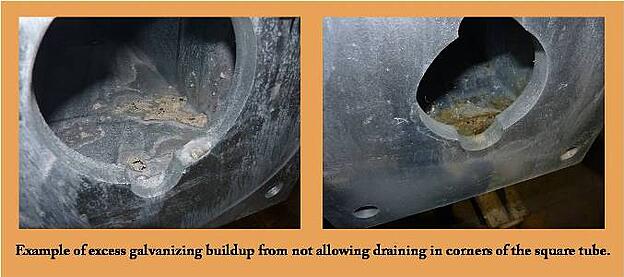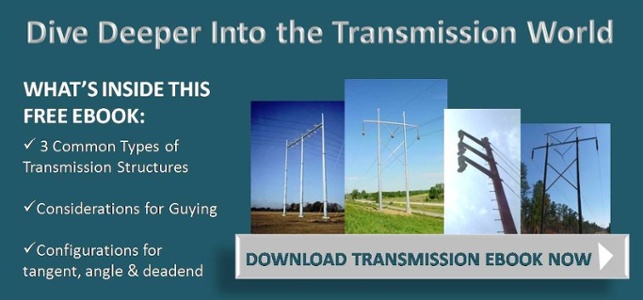Something that might be viewed as a small, insignificant venting hole on a 10,000 pound steel structure, if not well thought out, could really have an adverse effect on production.
These mistakes, big or small, can delay or even put a halt to jobs. It’s key that all along the process, from engineering to detailing and quality control, there are people in place who know what to look for. Once the structure gets delivered to the galvanizer it can become difficult and more costly to make modifications because plates might already be cut, or everything might be welded up.
When creating fabrication drawings for galvanized structures, it’s important, as well as valuable, to know proper draining and venting provisions for these steel structures. If adequate venting and draining holes are not provided, the structures can run into many problems.
5 Negative Effects:
1. Air pockets can form, causing structures to rust out from the inside
2. Excess galvanizing buildup
3. Lead to longer fabrication times
4. Welded plate can blow out, causing safety concerns
5. Poor coating
Not having adequate venting and draining holes can really have an intangible effect: it’s hard to put a dollar amount on what happens when a structure either doesn’t have proper venting, or one of the five stated above occurs. It’s usually not too hard to correct if it’s caught up front, but the further it gets in the process, and closer to the delivery date, is when the scrambling might start. All the man hours it takes to call the engineer on record to approve revisions, or contact customers, plant personnel, the galvanizer, etc. can really put a stop to production, causing low production numbers and possibly delayed shipping. (But working with a trusted steel fabricator, can help to avoid these issues.)

Some standard shape structures, such as square and rectangular tube columns and beams, are hollow, so provisions need to be made in order to allow galvanizing to easily flow and coat the inside portion of the structure. Sometimes fabricators will provide a small bar with a removable cover plate, attached with two (2) small stainless steel self-drilling screws. However, if the customer doesn’t feel this is sufficient enough, then the next suggestion could be to use a thicker bar with drill and tap holes, and two (2) A307-TAP bolts. Some might suggest the use of expanded metal, but excessive build up can take place, which is unsightly and also impairs vision into the tube, hindering the Quality Control Department from being able to adequately determine if interior galvanizing coating is sufficient.
Other standard shape structures like channels, wide flanges and angles, are solid, with just the outside receiving coating. Some issues that can arise with this are air pockets and excessive galvanizing buildup. For these shapes, you need to watch where stiffeners, connection plates and brackets are welded that could form large pockets of air as the section is dipped into the kettle. Tapered tubular structures are also hollow like square and rectangle tubes.
As a designer, you are always trying to find the balance of putting enough holes for galvanizing while not putting too many to affect the structural integrity of the steel member. For example, if dealing with corners in a square and rectangular tube, slots or holes can be provided near these corners to prevent air pockets from forming, which can decrease the amount of galvanizing coating in the area.
The more you understand how the member is lifted and dipped in and out of the galvanizing kettle, the better you can locate the venting and draining provisions.
For more information about galvanizing and how it works, click here to read past articles.

